
- •ПРЕДИСЛОВИЕ
- •1. FIRST MEN ON THE TERRITORY OF ENGLAND
- •2. HOW THE BRITONS LIVED
- •3. ТНЕ COMING OF THE ROMANS
- •4. ROMANS LEAVE BRITONS. THE ENGLISH INVASION
- •5. ANGLO-SAXON CONQUEST. STRUGGLE BETWEEN THE TRIBES. CONVERSION TO CHRISTIANITY
- •7. HOW THE FURIOUS DANES CAME DOWN UPON ENGLAND
- •8. THE TROUBLED LIFE OF KING ALFRED THE GREAT
- •9. AFTER ALFRED'S DEATH
- •11. EDWARD THE CONFESSOR
- •12. WILLIAM OF NORMANDY COMES TO ENGLAND
- •13. THE LONELY CROWNING. THE CONQUEROR'S WORK
- •14. SIR RICHARD'S SONG (A.D. 1066)
- •15. THE NORMAN TIMES
- •16. NORMAN AND SAXON (A. D. 1100)
- •17. WILLIAM RUFUS
- •18. FINE SCHOLAR, OR THE LION OF JUSTICE
- •19. WHEN THE WHITE SHIP WENT DOWN
- •20. THE WHITE SHIP (after Charles Dickens)
- •21. THE CIVIL WAR
- •22. WHAT CHARLES DICKENS WROTE OF THIS CIVIL WAR
- •23. HENRY II
- •24. THE HISTORY ABOUT THE PARENTS OF THOMAS A BECKET, THE ARCHBISHOP OF CANTERBURY
- •25. HOW THOMAS A BECKET WAS KILLED
- •26. FOUR SONS AGAINST THEIR FATHER
- •27. KING HENRY'S DEATH
- •28. RICHARD THE CRUSADER
- •29. KING JOHN, CALLED LACKLAND
- •30. HENRY III
- •31. EDWARD I, CALLED LONGSHANKS
- •32. THE HELPLESS KING EDWARD II
- •33. EDWARD III
- •34. RICHARD II, WAT TYLER. WYCLIF, LOLLARDS AND CHAUCER
- •35. HENRY THE FOURTH, CALLED BOLINGBROKE
- •36. HENRY V
- •37. HENRY VI
- •38. EDWARD IV
- •39. EDWARD V
- •40. RICHARD III (1452-1485)
- •41. SOCIAL AND POLITICAL LIFE IN THE MIDDLE AGES
- •42. CULTURE OF MEDIEVAL ENGLAND
- •43. HENRY VIII (1491-1547)
- •44. HENRY VIII. PART 2
- •46. FROM THE HISTORY OF LONDON
- •47. EDWARD VI (1538-1553)
- •48. QUEEN MARY (1516-558)
- •50. QUEEN ELIZABETH I. PART 2
- •51. RELATIONS WITH RUSSIA (TSARDOM OF RUS)
- •52. THE ENGLISH RENAISSANCE
- •54. JAMES THE FIRST (PART 2)
- •55. CHARLES THE FIRST (1600-1649)
- •56. CHARLES THE FIRST. THE LONG PARLIAMENT AND THE CIVIL WAR
- •57. THE CIVIL WAR
- •58. EXECUTION OF THE KING
- •60. OLIVER CROMWELL, THE LORD PROTECTOR
- •62. REBUILDING OF LONDON AND OTHER EVENTS DURING THE REIGN OF CHARLES II
- •63. ECONOMIC AND SOCIAL DEVELOPMENT OF ENGLAND DURING THE REFORMATION AND BOURGEOIS REVOLUTION
- •The Social Structure
- •Enclosures
- •Rise of Industries, Trade and Finance
- •English Colonialism and Principles of Foreign Policy
- •Colonization of Ireland
- •Trade Monopolies
- •The Navigation Acts
- •The East India Company in the 17-18th c. and Indian Colonization
- •North American colonization
- •Slave trade
- •REFERENCES
- •VOCABULARY PARAGRAPH BY PARAGRAPH
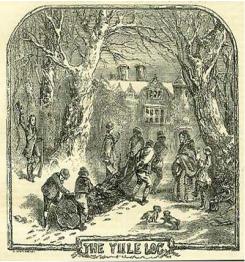
Министерство образования и науки Российской Федерации
Федеральное государственное бюджетное образовательное учреждение высшего профессионального образования
«Челябинский государственный университет» Миасский филиал
Е.В. Шелестюк
История Англии с древних времен до эпохи реставрации монархии
Учебное пособие по лингвострановедению
Часть 1
E.V. Shelestiuk
A History of England (Reader) Part 1: from Ancient Times to Restoration
Миасс
2012
1
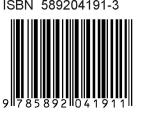
УДК 811.13я73 ББК Ш12я73
Ш 42 Шелестюк, Е. В. История Англии с древних времен до эпохи реставрации монархии : учеб. пособие по лингвострановедению : в 2 ч. Ч. 1 / Е. В. Шелестюк. – Миасс : Геотур, 2012. – 204 с.
ISBN 589204191-3
Предлагаемое пособие представляет собой первую часть курса истории Англии - от древнейших времён до эпохи Карла II. Книга знакомит читателя с особенностями исторического развития страны, политическим строем и культурной жизнью Англии указанных эпох.
Пособие составлено в соответствии с требованиями программ МГУ по страноведению и истории стран изучаемого языка и рассчитано на студентов филологических, лингвистических факультетов, факультетов иностранных языков и перевода. Оно может быть также рекомендовано к изучению студентам-регионоведам, историкам и политологам.
Рецензенты: доктор пед. наук, канд. филол. наук, заведующий лабораторией языкового политкультурного образования ТГУ им. Г.Р. Державина П.В. Сысоев; канд. филол. наук, заведующий кафедрой «МнК» Южно-Уральского
государственного университета А. Н. Зарецкая
ББК Ш12я73
© Е.В. Шелестюк, 2012
© ФГБОУ ВПО «ЧелГУ», Миасский филиал, 2012
2
TABLE OF CONTENTS
ПРЕДИСЛОВИЕ....................................................................................................................... |
5 |
1. FIRST MEN ON THE TERRITORY OF ENGLAND........................................................... |
6 |
2. HOW THE BRITONS LIVED............................................................................................... |
7 |
3. ТНЕ COMING OF THE ROMANS....................................................................................... |
8 |
4. ROMANS LEAVE BRITONS. THE ENGLISH INVASION.............................................. |
12 |
5. ANGLO-SAXON CONQUEST. STRUGGLE BETWEEN THE TRIBES. CONVERSION |
|
TO CHRISTIANITY ................................................................................................................ |
14 |
6.EDWIN, THE GREAT KING WHO FOUNDED EDINBURGH, OR EDWIN'S TOWN. |
|
BEDE, THE SCHOLAR........................................................................................................... |
17 |
7.HOW THE FURIOUS DANES CAME DOWN UPON ENGLAND................................... |
18 |
8.THE TROUBLED LIFE OF KING ALFRED THE GREAT ............................................... |
19 |
(848?-900)................................................................................................................................. |
19 |
9.AFTER ALFRED'S DEATH.................................................................................................. |
20 |
10. DANEGELD (987?-1016).................................................................................................. |
21 |
11.EDWARD THE CONFESSOR............................................................................................ |
22 |
12.WILLIAM OF NORMANDY COMES TO ENGLAND.................................................... |
23 |
13.THE LONELY CROWNING. THE CONQUEROR'S WORK........................................... |
25 |
14.SIR RICHARD'S SONG (A.D. 1066)................................................................................. |
26 |
15. THE NORMAN TIMES..................................................................................................... |
27 |
16.NORMAN AND SAXON (A. D. 1100).............................................................................. |
28 |
17.WILLIAM RUFUS.............................................................................................................. |
30 |
18.FINE SCHOLAR, OR THE LION OF JUSTICE................................................................ |
31 |
19.WHEN THE WHITE SHIP WENT DOWN........................................................................ |
31 |
20.THE WHITE SHIP (after Charles Dickens)....................................................................... |
32 |
21.THE CIVIL WAR................................................................................................................. |
33 |
22.WHAT CHARLES DICKENS WROTE OF THIS CIVIL WAR........................................ |
34 |
23. HENRY II............................................................................................................................ |
35 |
24. THE HISTORY ABOUT THE PARENTS OF THOMAS A BECKET, THE |
|
ARCHBISHOP OF CANTERBURY....................................................................................... |
36 |
25. HOW THOMAS A BECKET WAS KILLED..................................................................... |
36 |
26.FOUR SONS AGAINST THEIR FATHER......................................................................... |
39 |
27. KING HENRY'S DEATH................................................................................................... |
39 |
28.RICHARD THE CRUSADER............................................................................................. |
41 |
29. KING JOHN, CALLED LACKLAND............................................................................... |
45 |
30.HENRY III........................................................................................................................... |
48 |
31. EDWARD I, CALLED LONGSHANKS........................................................................... |
50 |
32.THE HELPLESS KING EDWARD II................................................................................. |
57 |
33.EDWARD III........................................................................................................................ |
58 |
34.RICHARD II, WAT TYLER. WYCLIF, LOLLARDS AND CHAUCER........................... |
62 |
35.HENRY THE FOURTH, CALLED BOLINGBROKE....................................................... |
66 |
36.HENRY V............................................................................................................................ |
68 |
37. HENRY VI.......................................................................................................................... |
70 |
38.EDWARD IV....................................................................................................................... |
73 |
39.EDWARD V......................................................................................................................... |
75 |
40. RICHARD III (1452-1485)................................................................................................. |
77 |
41.SOCIAL AND POLITICAL LIFE IN THE MIDDLE AGES............................................. |
79 |
42.CULTURE OF MEDIEVAL ENGLAND ........................................................................... |
85 |
3
43.HENRY VIII (1491-1547)................................................................................................... |
89 |
44.HENRY VIII. PART 2.......................................................................................................... |
93 |
45. SIR THOMAS MORE (1478-1535)................................................................................... |
99 |
46.FROM THE HISTORY OF LONDON.............................................................................. |
102 |
47.EDWARD VI (1538-1553)................................................................................................ |
107 |
48.QUEEN MARY (1516-558)............................................................................................... |
110 |
49.QUEEN ELIZABETH I (1533-1603) AND MARY QUEEN OF .................................... |
113 |
SCOTS (1542-1587)............................................................................................................ |
113 |
50.QUEEN ELIZABETH I. PART 2...................................................................................... |
118 |
51.RELATIONS WITH RUSSIA (TSARDOM OF RUS)..................................................... |
122 |
52.THE ENGLISH RENAISSANCE..................................................................................... |
128 |
53.JAMES THE FIRST (1566-1625) AND THE GUNPOWDER PLOT.............................. |
132 |
54. JAMES THE FIRST (PART 2)......................................................................................... |
136 |
55. CHARLES THE FIRST (1600-1649)............................................................................... |
139 |
56.CHARLES THE FIRST. THE LONG PARLIAMENT AND THE CIVIL WAR.............. |
143 |
57. THE CIVIL WAR.............................................................................................................. |
146 |
58.EXECUTION OF THE KING........................................................................................... |
149 |
59.OLIVER CROMWELL (1599-1658) AND PRINCE CHARLES'S ESCAPE.................. |
153 |
60.OLIVER CROMWELL, THE LORD PROTECTOR....................................................... |
159 |
61. CHARLES THE SECOND, THE MERRY MONARCH (1630-1685). THE |
|
RESTORATION..................................................................................................................... |
162 |
62. REBUILDING OF LONDON AND OTHER EVENTS DURING THE REIGN OF |
|
CHARLES II........................................................................................................................... |
166 |
63.ECONOMIC AND SOCIAL DEVELOPMENT OF ENGLAND DURING THE |
|
REFORMATION AND BOURGEOIS REVOLUTION........................................................ |
169 |
The Social Structure............................................................................................................ |
170 |
Enclosures........................................................................................................................... |
173 |
Rise of Industries, Trade and Finance................................................................................. |
174 |
English Colonialism and Principles of Foreign Policy....................................................... |
175 |
Colonization of Ireland....................................................................................................... |
178 |
Trade Monopolies............................................................................................................... |
181 |
The Navigation Acts............................................................................................................ |
181 |
The East India Company in the 17-18th c. and Indian Colonization.................................. |
182 |
North American colonization.............................................................................................. |
184 |
Slave trade........................................................................................................................... |
185 |
REFERENCES........................................................................................................................ |
189 |
VOCABULARY PARAGRAPH BY PARAGRAPH............................................................. |
191 |
4
ПРЕДИСЛОВИЕ
Предлагаемое пособие представляет собой первую часть курса истории Англии - от древнейших времён до эпохи Карла II. Книга знакомит читателя с особенностями исторического развития страны, политическим строем и культурной жизнью Англии указанных эпох.
Источниками послужили работы как зарубежных, так и отечественных специалистов. В основе структуры данного пособия лежат названия глав книг «История Англии. Тексты для чтения» (1-я часть) Г.С. Усовой и «История Англии для детей» Ч. Диккенса. Текст глав частично заимствован из указанных работ, а частично написан нами (41, 51, 63). Также во многие главы нами были включены дополнения, иллюстрации, отрывки из историографических источников, цитаты из оригинальных документов, из художественной, биографической и публицистической литературы. Исторические события тесно увязываются с реалиями современной Англии, например: Habeas Corpus, Stone of Scone, Prince of Wales, Tories and Whigs и т.д.
Пособие составлено в соответствии с требованиями программ МГУ по страноведению и истории стран изучаемого языка и рассчитано на студентов филологических, лингвистических факультетов, факультетов иностранных языков и перевода. Оно может быть также рекомендовано к изучению студентам-регионоведам, историкам и политологам.
Курс «История Англии» может предварять курс страноведения англоязычных стран либо сопутствовать ему. Дисциплину рекомендуется вести два семестра, она рассчитана на 72 учебных часа. Отдельные материалы пособия могут использоваться при изучении специальных дисциплин (лингвокультурологии, истории языка, лексикологии, стилистики и др.).
Вкачестве методической рекомендации предлагается ряд этапов работы с пособием:
1)задание на прочтение параграфов дома, ответы на контрольные вопросы; 2) задание на пересказ параграфов или разделов параграфов дома (на каждое занятие готовится 3-5 пересказов, возможен индивидуально-адресный подход); 3) на каждом занятии рекомендуется читать краткую обзорную лекцию на русском языке по материалам следующих параграфов; 4) также рекомендуется просмотр на занятиях или в качестве самостоятельной работы дома научно-популярных и художественных фильмов по соответствующим периодам истории.
Мы выражаем благодарность Галине Корман и Татьяне Галянской за помощь в подготовке и оформлении учебного пособия.
5
1. FIRST MEN ON THE TERRITORY OF ENGLAND
Nobody knows when the first men appeared on the territory of the British Isles, nobody can tell exactly. Contemporary archaeologists believe it happened in the Upper Palaeolithic (the Stone Age), between 40,000 and 10,000 years ago. Still, permanent settlements were only established within the last 6,000 years, in the Neolithic (the later Stone Age). The very oldest things we can find in that country are some rough stone tools which dropped from the hands of the men who made and used them in the old days when this island was not an island, but the part of the continent now called Europe. Wild animals and wild men could walk everywhere: there was no English Channel or Irish Sea and nothing could stop them.
We do not know what became of those men. The Cave Men lived after them, their tools were better made: they had harpoons to catch fish and arrow-heads to catch birds. But nobody knows what became of the Cave Men. The most interesting things which the Cave men left to us are their drawings of animals they saw before them: the great long haired mammoth, the reindeer, the oxen. Many of such drawings we can see in the caves of England and France.
The earth-ball rolled on year after year, century after century, and at last, as the ground sank in some places and rose in others, the sea rushed in over the lowest parts and formed the North Sea, the English Channel and the Irish Sea. After this men appeared again in this country from over the sea, now that it was an island; many different tribes followed each other, the new peoples came here, pushed the others to the north and to the east, even to Ireland and to Scotland.
The first tribes on the territory of Britain were the non-Indo-European tribe of Iberians (circa 10,000-3,000 B.C.), who migrated from the Iberian Peninsula. Around 2,500 B.C. the Beaker culture arrived, introducing drinking and food vessels, constructed from clay, later bronze and iron tools.
From that era date huge artificial constructions, such as the massive artificial mound with a flat top called Silbury Hill and the great circular earthwork ditch at Avebury. In many parts of the country we can find long and round grave-mounds called barrows, which are believed to belong to the people of these times. There are skeletons and bones in them together with the rough cups – you can see them in the museum below the Cave men's tools. Sometimes a little child had a whole barrow to itself; sometimes many people are buried together. We find in these barrows very interesting ornaments, brooches and necklaces, there are also the tools of bronze. As time went on the people in different parts of the country began to use iron tools.
Around 800-700 B.C. the Celts arrived from the continent, deriving from the Hallstatt and La Tene cultures. We call them Britons. Brythonic and Goidelic were the spoken languages during those times. Brythonic gave rise to Welsh, Cornish and Breton; or Goidelic gave rise to Irish, Scots Gaelic and Manx.
Around the 75 B.C. another Celtic tribe, the Belgae made their way across the English Channel into southern Britain. The Belgae brought with them a sophisticated plough that revolutionized agriculture in the rich, heavy soils of their new lands. They also introduced coinage to Britain and conducted a lively export trade with Rome and Gaul, including corn, livestock, metals and slaves.
We know a little about the ancient Celts from the visits of some travellers, who came to look for the tin in different parts of the island. When the travellers returned home they often wrote books about what they could see on that island, and from those books can read of the barns full of corn, about the sweet drinks which the natives offered to them, and so on. Pytheas of Massilia wrote of his trading journey to the island around 325 BC. Ptolemy in his Geographia asserts there were around 20 different Celtic tribes in the area.
A few centuries later, in the first century B.C., a kind of light lit the country, with the help of which we can see a better picture of how the people who lived in it. It was Julius Caesar, who came to Britain in 55 B.C. In his Commentarii de Bello Gallico Caesar describes the
6
mores and morals of Celts. He mentions that “most of the inland inhabitants do not sow corn, but live on milk and flesh, and are clad with skins. All the Britons, indeed, dye themselves with wood, which occasions a bluish colour, and thereby have a more terrible appearance in fight.” Other Roman writers also describe some facts of Britannia, as the Romans called it. Pliny the Elder mentions the tin trade from southern Britain. Tacitus writes that there was no great difference in language between the people of southern Britannia and northern Gaul and noted that the various nations of Britons shared physical characteristics with their continental neighbours.
Comprehension questions
1.When did the first men appear on the territory of Britain? What did they leave behind them?
2.Speak of the earliest tribes in Britain.
3.What languages did the Britons speak and what later languages developed from them?
4.What do the Greek and Roman writers tell us about Britons?
2.HOW THE BRITONS LIVED
The people who came to trade with the Britons often stayed there, on the south coast of England, which is now called Kent, and they taught the Britons some useful arts. Little by little, strangers mixed with the Islanders, and the savage Britons became a bold people, very brave and strong.
There were many forests in the country, and many swamps. The country was misty and cold. There were no roads, no bridges, no streets, no real houses, only straw-covered huts in a thick wood. They had a ditch round several houses, and a low wall made of mud, or some trees put on one another. The people planted little or no corn, but they had cattle. They made no coins, hut they had metal rings for money. They had very coarse cloth, but they were very clever in building fortresses. They made boats of twigs, covered with the skins of animals, but seldom sailed far from the shore.
Their crafts were rather developed; bronze urns, bowls and torques illustrate their metalworking skills. They made swords of copper, but they bent when the blow was strong, because they were soft. They made light shields, short daggers, and spears.
The Britons were divided into twenty to forty tribes; they lived in urban settlements, around the capitals of their tribal chiefs.
They were very fond of horses. The standard of Kent was the picture of a white horse. The people taught their horses very well, so that the animals understood and obeyed every word of command.
The Britons had a strange and terrible religion — the Religion of the Druids. The druids were the priests, who also pretended that they were enchanters. They met together in dark woods, which they called Sacred Groves; and they taught there young men who came to them as pupils and who sometimes stayed with them for twenty years. The Druids glorified the pursuits of war, feasting and horsemanship. They controlled the calendar and the planting of crops and presided over the religious festivals and rituals that honoured local deities.
These Druids built great temples and altars, open to the sky, the remains of some of them we can see now. The most extraordinary of these is Stonehenge, thought to have been erected c.2500-2000 BC.
7
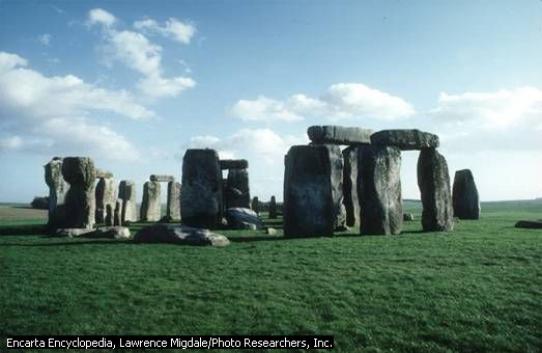
Of the Celtic peoples, Hermann Noelle wrote:
The Celtic culture as a whole, developing very early on about 1000 BC, and reaching its finest expression around 500 BC, is a fundamental part of Europe's past. This is not to underrate the subsequent influence of the Latin and Germanic peoples on this part of Europe. But the Celtic foundation was already present. Thus, European culture is inconceivable without the Celtic contribution. Even when the presence of the Celts in their original territory is no longer obvious, we must acknowledge the fact: they are at the root of the Western European peoples who have made history. (cited from [Williams http://www.britannia.com])
Comprehension questions
1.What kind of people were ancient Britons?
2.Describe their villages, dwellings, way of life.
3.What tools did they make?
4.Speak on the religion of Druids.
5.How is the heritage of Celts evaluated?
3. ТНЕ COMING OF THE ROMANS
The Britons, who gave their name to the island, were Celts, but they were not the only Celts who lived there; in the west and north there were others called Gaels. The Britons who lived in the south had some trading connection with the Continent, chiefly in minerals.
Now, in the century just before the birth of Christ, one of the Mediterranean nations succeeded to conquer all the others, so that it became master of the whole of the then known world.
This was the Roman nation and a great Roman soldier and ruler who stands out in this first century B.C. was the first to tell us about Britons. He lighted for us that dark period of history. His name was Julius Caesar (100 B.C. - 44 B.C.), the great general and a politician of Rome.
When we study the calm, determined face of Julius Caesar in the gallery of Roman portraits in the British Museum we shall soon understand what made him so strong and powerful. He always could do everything he believed best and he could control others. He
8
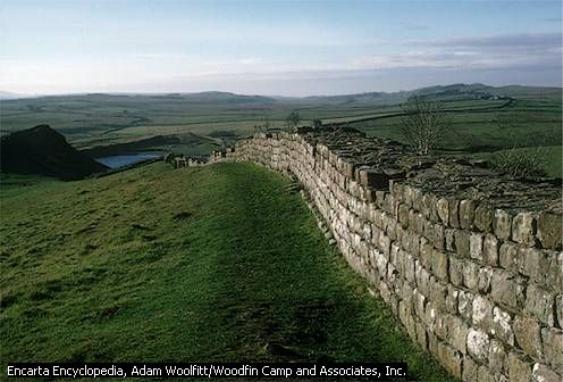
was always at work: he conquered different peoples, looked after his soldiers, — and yet he found time to write books about his travels, which our students read when they learn Latin.
In 55 B.C. he wanted to subdue the Gauls, but when he found that the Britons helped them, he decided to attack the islanders. Julius Caesar with his army landed in Britain one summer day, and the Britons were so frightened, that they fled inland, and Caesar had not so much cavalry as to pursue them. So he returned back to Gaul, but in the following year came back. Again he did not conquer Britain but he described the country to the civilised Roman world, and the Romans knew all the particulars about Britons and remembered well that the warriors on the island painted their faces blue to terrify their enemies, that they had the chariots with scythes on their axles, that they had strong hill-camps fortified with stakes and logs of wood. After some time the Romans could send enough soldiers to meet the British wild warriors and to subdue all the country of the plains. It happened in 43 A.D., when the Emperor Claudius (10 B.C. - 54 A.D.) sent his expedition to Britain.
Later the Romans built a line of forts between the rivers Clyde and Forth to protect the southern parts from the wild Caledonians (A.D. 84). About forty years later the Emperor Hadrian built a double wall between the rivers Tyne and Solway — the Hadrian Wall. We can still see the remains of these walls in our days; a railway runs in that direction now. In the A.D. 140s on the orders of the Emperor Antoninus Pius the Antonine Wall was constructed between the Firth of Forth and the Firth of Clyde.
Little by little, as the Roman soldiers gained ground, some Britons went to the west, to the moors of Cornwall, to the mountains of Wales and Cumberland. In these parts we now find the people whose forefathers were Ancient Britons. However, this exodus was not even comparable to the exodus that came later, when Anglo-Saxons began their cleansing of the Celts.
9
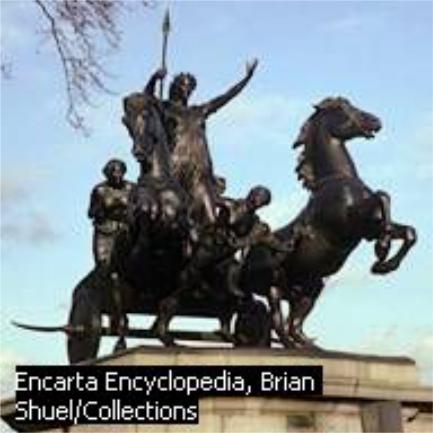
Most of the Britons settled down among the Romans, from whom they learned many things. They helped the soldiers to drain the marshes and cut down trees, and to make the fine roads which crossed the country, and are still a pleasure to use, so well and straight they are.
The early Britons had two brave chiefs who resisted the Roman conquest. One of them was Boadicea, the queen of the Iceni, one of the British tribes. The statue of her, showing her standing in a war chariot with two wild horses, calling to her soldiers to fight, stands on Westminster Bridge in London, facing the Houses of Parliament.
In the first century A.D. Boadicea fought the Romans with all her might and led her people in battle, but the enemies were stronger. At last she killed herself because she did not want to become a prisoner.
Caractacus was another British chief. He also lived in the first century after Christ. Caractacus lost everything when he fought to drive out the Romans. The Romans took him to Rome as a prisoner with his wife and children. He did not behave at all as a frightened captive, but proudly, as a free-born man, and he said to the Roman emperor: "You fight to gain the whole world, and to make everybody your slaves. I fought to keep my own land, and for freedom".
For about four hundred years Britain was part of the Roman Empire. The thousands of soldiers who came during these centuries from every part of the empire left many remains on the soil of the country, especially in the cities founded by the Romans in London, York, Winchester and Bath. There are the altars they set up to their gods, their weapons and armour, the memorial stones put up to honour their memories. They built many beautiful country villas — in the sunniest and healthiest places, with a fine view, among gardens with fountains and statues. When danger arose, they buried much money and jewellery.
We can well picture the life in those villas, as we look at the fine pavements, the shoes of the ladies and children, the lamps, writing materials and other treasures which we found among their ruins. Some of the pottery and glass were made in Britain, the Britons could learn very quickly.
10
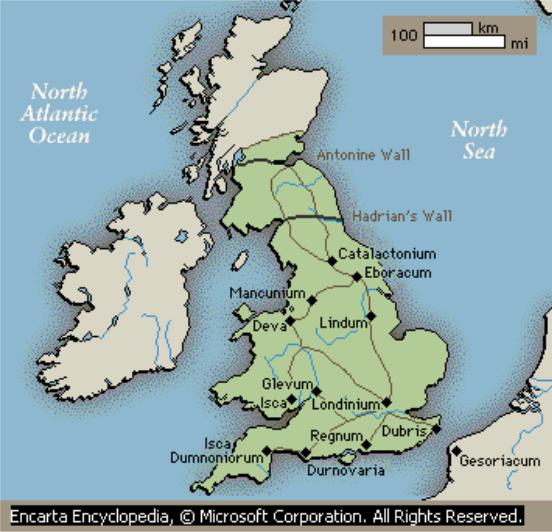
London (Lat. Londinium) rose and became an important city in Roman times. About twenty feet below the pavements of the City of to-day we find the remains of its greatness. The strong walls built for its protection ran on the lines of our Underground Railway. There are many stations in London Underground with the word "gate" in their names — Aldgate, Moorgate and so on. In the Roman time from these gates in the walls started the great roads which passed over the country — like the great main lines of railways at the present time — they connected the City with their stations at Lincoln, York, Chester and many others. Traders brought there their goods.
Comprehension questions
1.The early contacts of Britons with Rome.
2.The Roman Empire and Julius Caesar.
3.The first arrival of Romans in Britain.
4.The Roman invasion. The Hadrian Wall.
5.Describe the Celtic revolts against the Roman rule.
6.The Roman heritage in Britain.
11
